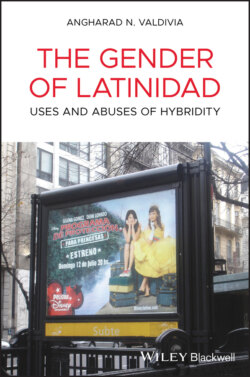Читать книгу The Gender of Latinidad - Angharad N. Valdivia - Страница 8
Notes
Оглавление1 1 Elsewhere, many scholars have written about the history of Latina/o Studies and the previous academic formations that contributed and continue to coexist with this interdiscipline. The Gender of Latinidad begins within Latina/o Studies as a pan‐national and pan‐ethnic formation.
2 2 There is a long history and debate within US Latina/o Studies, and more so within Chicana/o Studies, about the mythical “bronze” race, which celebrated the indigenous elements of the Southwest Latina/o. Most powerfully articulated in the 1960s and '70s, this bronze race discourse was politically powerful and served to unify and valorize the presence and history of US Latina/os.
3 3 I put “voluntary” in quotes because it hides the many layers of involuntary migration due to famine, persecution, and economic dispossession. To be sure, there are fully voluntary migrants, but waves of migration usually follow push‐out forces that make it impossible for populations to remain in their homeland.
4 4 I realize “Latinx” is widely used instead of “Latina/o.” A complex conversation about terminology is beyond the scope of this book. I am still being educated about it. Whereas I am persuaded by Vidal‐Ortiz and Martínez’s (2018) call to challenge androcentric gendered hierarchies, I am also respectful of R. Rodriguez's (2017) questions about what is left out or eliminated by the “x.” Furthermore, as Trujillo‐Pagan (2018) convincingly argues, “Latinx” amounts to “genderblind sexism,” echoing Molina‐Guzmán's (2018) work on colorblind casting and providing yet another call for the agency to claim a gender, like the previously referenced Rodriguez (2017). Consequently, throughout the book I will use the term “Latina/o,” as I continue to explore the possibilities and challenges of “Latinx.”
5 5 This was evident in a global children's television project in which I participated. In terms of coding race, research teams across national boundaries found it impossible to concur as to what counted as “white” and what counted as “black,” let alone the many possibilities in between.
6 6 This might read offensive to some, but in Latin America, the term “Chino” is applied to all Asian‐descendant or even Asian‐looking people. This usage of the term has been imported to the United States, where many use “Chino Latino” to refer to Asian‐Latinos.
